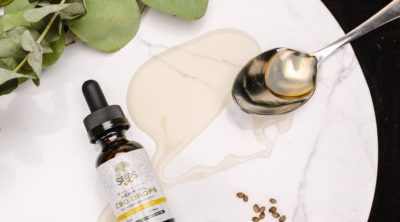
Arnica cream is a natural ointment used for healing body aches and bruises. This article will tell you more about its uses and benefits.
Arnica cream is an anti-inflammatory and pain-relieving topical cream, prepared from the extract of the arnica plant. Like the sunflower plant, the Arnica montana plant belongs to the family Asteraceae, and produces similar large yellow flowers that are known for their medicinal value. This European flowering plant, also known as mountaintop tobacco and leopard’s bane, grows 2 feet tall on thick, hairy-looking stems. During early 1500’s, Europeans used arnica cream to treat stomach problems and skin rashes, however, nowadays it is commonly used to relieve pain due to muscle spasms, bruises and strains.
Ingredients
Arnica cream’s healing properties come from an active component in the flowers, and is called sesquiterpene lactone. However, in large quantities, this compound induces allergic reactions in people. Generally, arnica preparations like creams, gels, etc, are made using dried blossoms, but sometimes fresh flowers are also used. The plant also comprises many other therapeutic components like thymol (an essential oil), inulin, carotenoids, flavonoids, and tannins, which are effective in repairing, soothing, and reducing swelling or inflammation due to damaged muscle tissues. Moreover, these compounds have major antioxidant properties, that provide an excellent defense against free radicals in the body, and also help prevent certain types of cancers.
Uses and Benefits
- Arnica cream is a homeopathy cream mainly used for injuries that do not result in open wounds or broken skin, as it can irritate the wound. Hence, it is commonly used to relieve pain or inflammation due to damage to soft tissue such as bruising after a fall or impact, sprains, and swelling as a result of fractures, strain, or overuse.
- It works by regulating the immune system’s response to an injury. Basically, when body is injured the immune system sends blood to the affected area to combat the injury. The cream helps in moving the blood both, rapidly towards and away from the affected area, so that toxins, excess blood, and fluid buildup gets carried away. This speeds up the healing process and slows down the swelling of the soft tissue.
- It also helps in relieving pain and inflammation in the joints due to arthritis.
- Its anti-inflammatory and numbing properties makes it one of the best herbal medicine for persistent skin disorders like psoriasis and eczema. Also, it is believed to reduce the swelling and pain due to insect bites.
Precautions to Be Taken
Although it is considered to be safe for regular topical use, its prolonged use may cause some allergic reactions like skin redness, itching, blisters, etc,. In some people, it can exacerbate eczema at the site where the cream is applied. Likewise, people having allergies to arnica or other members (plant) of the Asteraceae family, are also likely to suffer from adverse allergic reactions. Also, one should avoid applying it on an open would or broken skin, and should never ingest it due to its toxic nature. Hence, its use must be done with some caution.
Applying a thin layer of arnica cream on the affected area 2 – 3 times a day is not only effective in relieving pain and inflammation, but is safe too. So next time, when you have muscle pains or any other similar complications, instead of pills and antibiotics, try this age-old natural way of healing. However, if no improvement is seen in the condition, consult your doctor to ensure you don’t have a serious injury that needs immediate medical attention.


